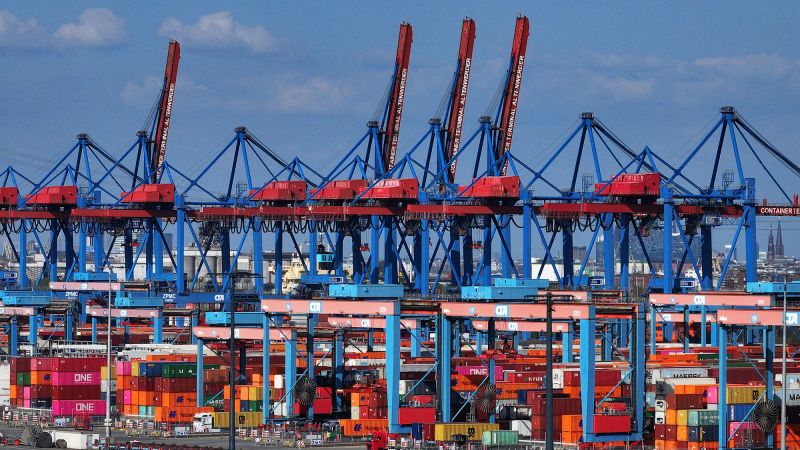The escalating tensions between the European Union (EU) and the United States regarding trade tariffs have reached a critical juncture. The EU has issued a stark warning that a proposed 30% tariff imposed by the U.S. on imported goods could completely devastate the trade relationship between the two economic powerhouses. This move, threatened by U.S. President Donald Trump, is seen as a significant escalation in the ongoing tariff disputes that have characterized international trade interactions in recent years.
Maroš Šefčovič, the EU’s trade commissioner, articulated the severe consequences that the introduction of such a high tariff rate would entail. Upon arriving at a ministerial meeting in Brussels, he remarked that a tariff of 30%, or even higher, would functionally prohibit trade. He underscored the potential negative ramifications that such a tariff could have on both sides of the Atlantic, emphasizing that if the tariff remains at 30% or more, it would be nearly impossible for the EU to maintain its existing levels of trade with the U.S. Šefčovič’s comments reflect the urgent need for dialogue and negotiation as the threat looms closer.
The trade relationship between the EU and the U.S. is substantial. Data from the European Council indicates that bilateral trade in goods and services reached an impressive €1.68 trillion (approximately $1.96 trillion) last year, highlighting the economic interdependence that exists between these two regions. The partnership is significant, accounting for nearly 30% of global goods and services trade, making any disruption potentially catastrophic for both economies.
Trump has long criticized the EU for what he terms ‘unfair trade practices’. In April, he accused the 27-nation bloc of having been “formed to screw” the United States, pointing to EU-imposed tariffs on American goods and the imposition of non-tariff barriers, such as taxes on digital services, as evidence to support his contention. Since taking office in January, Trump has engaged in an aggressive tariff strategy, seeking to address the U.S. trade deficit and bring manufacturing jobs back to American soil by imposing higher tariffs on various countries.
In response to the increasing likelihood of an additional tariff, EU trade officials have been in ongoing negotiations with their U.S. counterparts to mitigate the impacts of Trump’s proposed tariffs. Following an earlier announcement in May where Trump threatened to increase the rate of his ‘reciprocal’ levy on EU goods from 20% to an alarming 50%, these negotiations have intensified. Šefčovič expressed optimism that a negotiated solution was achievable, noting that discussions were nearing an agreement prior to Trump’s latest threats. The EU’s strategy emphasizes patience and creativity in seeking a resolution to avert a trade crisis.
Complicating matters further, the EU recently announced a delay in implementing countermeasures that would affect €21 billion ($25 billion) worth of U.S. exports, originally scheduled to begin after an initial Monday deadline. This strategic pause is intended to create space for further negotiations amid ongoing tensions regarding existing tariffs on steel and aluminum imports imposed by the U.S., which were set at 25%.
Lars Løkke Rasmussen, Denmark’s foreign minister, stressed the importance of a fair deal for the EU while also acknowledging the necessity of preparing potential countermeasures. In his remarks ahead of the EU trade ministers’ meeting, he noted, “If you want peace, you have to prepare for war,” indicating that the EU must remain ready to utilize all available tools to respond to U.S. actions if necessary.
As the trade war rhetoric intensified, European financial markets reacted. On the first trading day following Trump’s tariff threat, European stocks experienced a downturn; the Stoxx Europe 600 index was down by 0.27% in early afternoon trading. This decline underscores the immediate market anxieties surrounding the potential fallout from the proposed U.S. tariffs.
In conclusion, the ongoing trade dispute signals a critical moment in EU-U.S. relations, with both sides recognizing the high stakes involved. The outcome of this conflict could have far-reaching implications for global trade dynamics, economic stability, and the future of international relationships.










